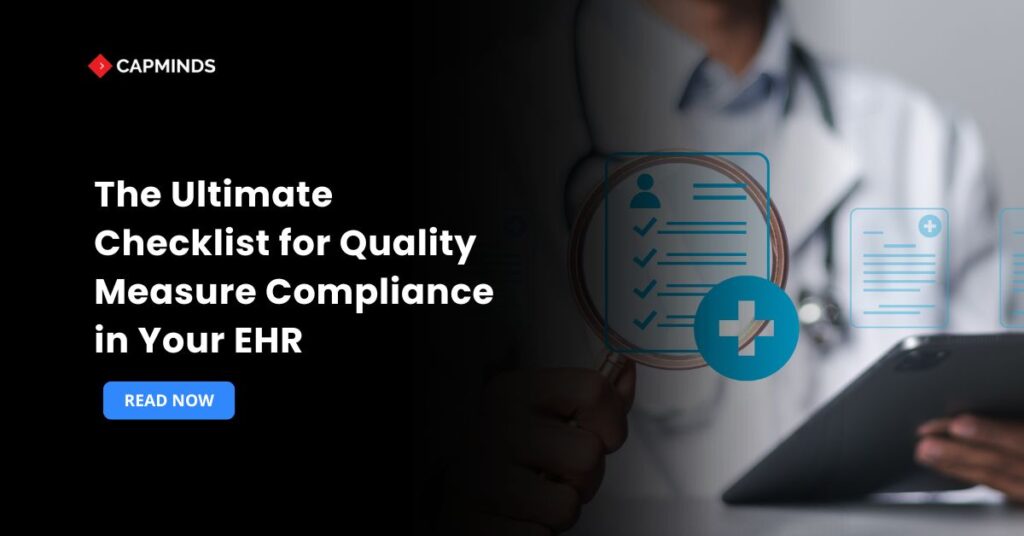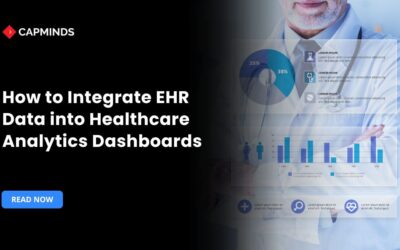The Ultimate Checklist for Quality Measure Compliance in Your EHR
Healthcare organizations undergo increasing pressure to enhance patient outcomes while adhering to tight regulatory standards. Ensuring your EHR system supports quality measure compliance is one of the most crucial steps in achieving this balance. Without the right strategies, providers risk failed audits, denied reimbursements, and patient safety issues.
In this blog, the comprehensive checklist will assist you in determining whether your EHR system satisfies regulatory standards and is prepared to serve your operational and clinical objectives.
Why EHR Quality Measure Compliance Is Important
Regulatory agencies, including CMS, ONC, and NCQA, have established quality measures as standards for assessing the performance of healthcare. They have a direct effect on reimbursement rates, the standard of patient treatment, and the standing of the organization.
Your practice is at risk if your EHR does not support quality measure reporting. Compliance guarantees:
- Correct reporting to payers and CMS
- Increased incentive payments in models of value-based care
- Faster reimbursements and lower denial rates
- Improved patient outcomes by using consistent data collection
Providers may stay in compliance with regulations and obtain useful information to enhance care delivery by integrating compliance into their EHR operations.
1. Compliance with Regulations
Verifying that your EHR conforms with the most recent federal and state regulations is the first step. This covers USCDI standards, TEFCA criteria, ONC accreditation, and CMS quality initiatives.
Your EHR must support the following:
- Value-based care providers who report under MIPS and MACRA
- Programs for Promoting Interoperability and Meaningful Use
- Interoperability standards for HL7 and FHIR
- HIPAA and security regulations to safeguard patient information
Upgrading EHRs is frequently necessary when moving to the current rules. Your team can avoid last-minute reporting hassles by making sure your vendor is proactive with compliance upgrades.
2. Precise Data Capture
Quality reporting is built on the foundation of accurate data. All modules of an EHR, including labs, medications, and clinical notes, must reliably capture structured data.
Providers run the risk of inconsistent or missing reporting if input fields are not standardized.
Make sure your EHR has:
- Templates and drop-down menus for structured data
- ICD-10, CPT, LOINC, and SNOMED are examples of standardized coding schemes.
- Integrated data validation guidelines to avoid mistakes
- Prompts for missing information in real time
During CMS or payer audits, accurate data entry guarantees smoother reporting and reduces claim denials.
3. Robust Reporting and Analytics
With integrated dashboards and analytics capabilities, EHRs must streamline the reporting process. Data extraction done by hand is time-consuming and prone to errors.
Important characteristics to search for:
- Automated quality measurement dashboards with drill-down reports
- Pre-made CMS and payer reporting templates
- Tools for clinical decision support using data visualization
- Options for exporting in common formats (QRDA, XML, CSV)
Providers can keep an eye on performance gaps prior to submission deadlines and take early corrective action with real-time data.
4. Interoperability Proficiency
Data sharing across labs, imaging facilities, pharmacies, and payers is necessary for quality measures. Reporting becomes disjointed if your EHR is unable to communicate with other systems.
Look for:
- Integrations with the FHIR API for instantaneous data exchange
- Interfaces for HL7 v2 and v3 for connecting to legacy systems
- DICOM compatibility for imaging data
- Infrastructure prepared for the interchange of national health data by TEFCA
To minimize gaps in quality reporting and enhance care coordination, strong interoperability guarantees that your EHR pulls in the entire patient record.
5. Audit Trail and Security
Compliance involves more than just gathering and disclosing data; it also entails demonstrating that the data is reliable and secure. During external audits, your company is protected by a strong audit trail.
Your EHR ought to contain:
- Automated recording of every user action
- To stop unwanted access, use role-based access controls.
- Data encryption both in transit and at rest
- Frequent notifications of breaches and compliance reports
A robust security framework ensures CMS and HIPAA compliance while lowering financial and legal risks.
6. User Assistance and Training
If employees are not adequately taught, even the most advanced EHR systems malfunction. Clinicians, coders, and administrative staff must be proficient with the system to comply with quality measures.
Among the best practices are:
- Programs for onboarding that are specific to each user role
- Frequent upgrades and refresher training sessions
- Round-the-clock technical assistance from your supplier
- Help instructions and compliance prompts within the app
When users know how to properly record and document, compliance stops being a once-a-year scramble and becomes a regular component of workflow.
7. Continuous Observation and Enhancement
Maintaining compliance is a continuous process. Every year, healthcare rules change, so your EHR strategy needs to change with them. Staying ahead is facilitated by ongoing monitoring and routine internal checks.
Create a procedure that consists of:
- Compliance reviews are conducted every month or every three months
- Automated notifications for ineffective measures
- Comparing benchmarks to industry norms
- Loops of feedback from administrators and clinicians
Your EHR will support improved outcomes and payer needs if it is continuously improved.
Related: Interoperability and Compliance: What It Takes to Pass CMS Audits
Benefits of a Compliance-Ready EHR in Practice
EHRs that are compliance-ready offer quantifiable benefits beyond avoiding fines:
- Financial ROI – Revenue leakage is reduced by 95–98% clean claim rates
- Clinical Efficiency – Computerized reporting increases staff productivity by 30%
- Patient outcomes: Improved satisfaction and fewer readmissions to hospitals are the results of better monitoring of preventative care initiatives
To put it briefly, compliance promotes both operational effectiveness and superior patient care.
CapMinds Digital Health Compliance Services
At CapMinds, we understand that compliance is more than a regulatory checkbox; it’s a service that drives better outcomes, operational efficiency, and financial stability.
Our digital health tech services are designed to ensure your EHR system not only meets today’s quality measure requirements but also adapts to future regulatory shifts.
With CapMinds, you gain a partner committed to delivering end-to-end healthcare technology solutions, including:
- Compliance Services – Stay aligned with CMS, ONC, TEFCA, USCDI, and HIPAA
- Quality Reporting Services – Automate CMS, payer, and MIPS submissions with accuracy
- EHR Quality Measure Compliance Services – Ensure structured data capture, audit readiness, and reduced claim denials
- Interoperability & Integration Services – HL7, FHIR, and API-based data exchange for seamless workflows
- Training & Support Services – Empower staff with compliance-focused EHR usage
CapMinds helps healthcare organizations future-proof compliance, safeguard reimbursements, and enhance patient care.
Partner with us today to transform compliance into a strategic advantage.




